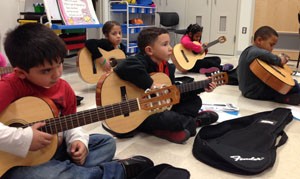The North Central Phoenix area’s two major high school districts both are seeking additional funding through ballot measures on Nov. 3.
The Phoenix Union High School District Governing Board has called for a District Additional Assistance (DAA) Budget Override Election.
The DAA Budget Override, formerly called a Capital Outlay Override, will ask voters for authorization to exceed the allowable DAA budget by $15.3 million, or 10 percent of the Revenue Control Limit. The DAA Override allows a school district to levy a tax to pay for capital needs that cannot be met by the district’s regular capital budget.
According to board members, the election was called in response to the State Legislature’s 85-percent reduction in the district’s capital funding in recent years. That funding has been cut by more than $12 million, which includes capital from this school year.
Board members say the DAA Override would provide funding for band instruments and uniforms, library books and equipment, textbooks, technology and software, campus instructional aids, athletics and PE, fine arts equipment, classroom furniture, computers and campus maintenance and grounds equipment.
The proposed DAA Budget Override would be in effect for seven years, beginning in July 2016. The annual tax rate is estimated to be $ .3589 for the first year, which equates to an increase of $35.89 per year in secondary property taxes for a home with an assessed value of $100,000.
In addition, voters within the Glendale Union High School District will be asked to approve the sale of $70 million in bonds which, if approved, will be used to renovate and maintain schools, improve energy efficiencies, and to purchase school furniture, equipment, technology and buses.
Historically, the district received capital funding and facility funding based on formulas. District officials contend the state has not adhered to its funding formulas.
Since 2009, the district has been cut $33.3 million in capital funding. In addition, the facility funding for the district intended for major renovations and preventive maintenance of buildings was underfunded by $48.7 million and was completely eliminated in 2013.
If approved, the bonds will be issued in phases as funds are needed for capital expenditures. The estimated additional annual cost to taxpayers with a home assessed at $100,000 would be approximately $29.
Each of the high schools in the district would benefit from the bonds. Proposed capital improvements include critical repairs to old roofs, air conditioning systems, flooring and cafeteria infrastructure. Additionally, technology, furniture and equipment to support schools and buses for reliable transportation are part of the proposal.










































